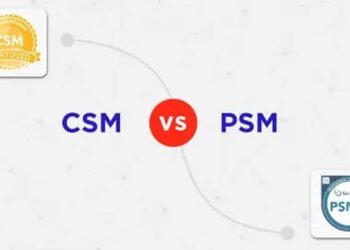Payment collection may appear straightforward, but in reality, it’s often bogged down by delays, disputes, and inefficiencies that quietly erode cash flow. The process, from managing overdue invoices to navigating complex client approvals, can feel never-ending. These challenges don’t only affect the bottom line—they also strain relationships, hinder operational efficiency, and stunt growth.
Fortunately, modern businesses are addressing these hurdles by adopting smarter, proactive strategies. In this article, we’ll explore the most common payment collection challenges and discuss how modern software can help resolve them effectively.
Challenge 1: Late Payments
Late payments are one of the most prevalent issues businesses face. These delays can result from unclear payment terms, disorganized customer systems, or even intentional procrastination. Prolonged payment cycles affect cash flow, lead to higher reliance on external financing, and increase the risk of bad debt write-offs.
Solution:
- Clear Communication: Clearly outline payment terms in contracts and invoices. Specify due dates, penalties for late payments, and acceptable payment methods. Highlight these terms during the onboarding process to ensure customers are well-informed from the start.
- Automated Reminders: Use advanced collection software to send scheduled reminders before and after due dates. These reminders can include email notifications, SMS alerts, or even automated calls to reduce instances of forgotten payments.
- Incentives for Early Payments: Encourage prompt payments by offering tangible benefits, such as discounts for early payments or loyalty rewards for consistent on-time behavior.
Challenge 2: Ineffective Customer Communication
Unclear or irregular communication often leads to payment delays. Customers may forget invoices, misunderstand payment terms, or encounter difficulties accessing payment systems. This lack of coordination can result in strained relationships and lost revenue.
Solution:
- Omnichannel Communication: Implement a multi-platform communication strategy, reaching customers via email, SMS, phone calls, and even customer portals. Ensure consistent messaging across all channels.
- Personalized Messaging: Leverage customer data to tailor communication. For example, include specific invoice details or payment history in reminders, so customers can easily track their obligations.
- Customer Portals: Provide an intuitive self-service portal where customers can view and download invoices, payment histories, and upcoming due dates. Ensure these portals are mobile-friendly for easier accessibility.
Challenge 3: High DSO (Days Sales Outstanding)
A high DSO indicates inefficiency in collecting receivables. It ties up working capital, increases operational costs, and hampers the ability to reinvest in growth opportunities.
Solution:
- Credit Risk Assessment: Conduct thorough evaluations of customer creditworthiness before offering extended payment terms. Use credit scoring tools to classify customers based on their risk levels.
- AI-Based Worklist Prioritization: Use AI-powered solutions to analyze customer payment behaviors, prioritize high-risk accounts, and allocate resources to focus on accounts most likely to delay payments.
- Flexible Payment Options: Offer diverse payment methods, including credit cards, ACH, wire transfers, and online gateways. Flexible options reduce friction and improve customer convenience, accelerating payment cycles.
Challenge 4: Manual Processes
Manual payment collection processes are slow, prone to human error, and often create inefficiencies in invoice tracking and reconciliation. This not only delays payments but also increases administrative costs.
Solution:
- Automated Collection Software: Transition to robust collection management tools that automate invoicing, reminders, and follow-ups. Automation minimizes errors and ensures consistency in communication.
- Integrated Systems: Connect your accounts receivable, ERP, and CRM systems to create a seamless flow of data. This integration helps with real-time tracking of payments and quicker reconciliation.
- E-Invoicing: Replace paper-based invoicing with electronic invoicing. E-invoices are faster, more accurate, and easier to track, enabling customers to process payments more efficiently.
Challenge 5: Managing Disputes
Invoice disputes are a significant roadblock to timely payments. These can arise from incorrect billing, missing purchase orders, or discrepancies in delivered goods and services.
Solution:
- Proactive Dispute Management: Implement systems that automatically flag potential discrepancies during the billing process. Early detection helps prevent disputes from escalating.
- Streamlined Resolution Process: Establish a dedicated team or platform for managing disputes. Ensure quick resolution by providing clear escalation paths and timelines.
- Transparent Documentation: Provide detailed and itemized invoices with supporting documents such as contracts or delivery receipts. Clear documentation reduces the chances of misunderstandings.
Challenge 6: International Payment Complexities
For businesses operating globally, challenges like currency conversions, compliance with local regulations, and varying payment preferences create barriers to efficient collections.
Solution:
- Multi-Currency Support: Deploy payment systems that can automatically handle currency conversions, reducing delays caused by manual processes or third-party services.
- Localized Payment Options: Offer payment methods that align with regional preferences, such as SEPAin Europe, UPI in India, or digital wallets in Southeast Asia.
- Compliance Tools: Use automated tools to stay updated on international regulations such as GDPR, PSD2, and anti-money laundering laws. This reduces risks of non-compliance and payment rejections.
Challenge 7: Lack of Analytics and Reporting
Without actionable insights, businesses struggle to identify collection bottlenecks or implement strategies to optimize payment processes. This blind spot hinders performance improvements.
Solution:
- Real-Time Dashboards: Invest in analytics platforms that provide real-time data on collection performance, overdue invoices, and customer behavior. Interactive dashboards help teams take immediate action.
- Predictive Analytics: Use AI and machine learning to forecast payment trends, anticipate delays, and adapt collection strategies. Predictive models also help in identifying high-risk accounts.
- KPI Tracking: Monitor critical metrics like DSO, collection efficiency, and dispute resolution times. Regularly reviewing KPIs ensures alignment with organizational goals and highlights areas needing improvement.
Conclusion
Managing payment collections is often a complex and resource-draining task. Delays, disputes, and cross-border payments can strain cash flow and hinder operational success. Technology has transformed this area by offering solutions that automate processes, streamline workflows, and leverage real-time data.
With the right tools, such as debt collection software, overcoming payment challenges becomes a seamless process. It offers a centralized solution to automate repetitive tasks, improve communication with customers, and leverage data-driven insights to prioritize efforts. Whether you’re dealing with manual inefficiencies or struggling to manage international payments, advanced debt collection tools equipped with AI and predictive analytics help overcome these obstacles effectively.
Don’t let outdated methods hinder your growth. Invest in software that accelerates cash flow, preserve valuable customers and helps your collections team achieve more in less time.












